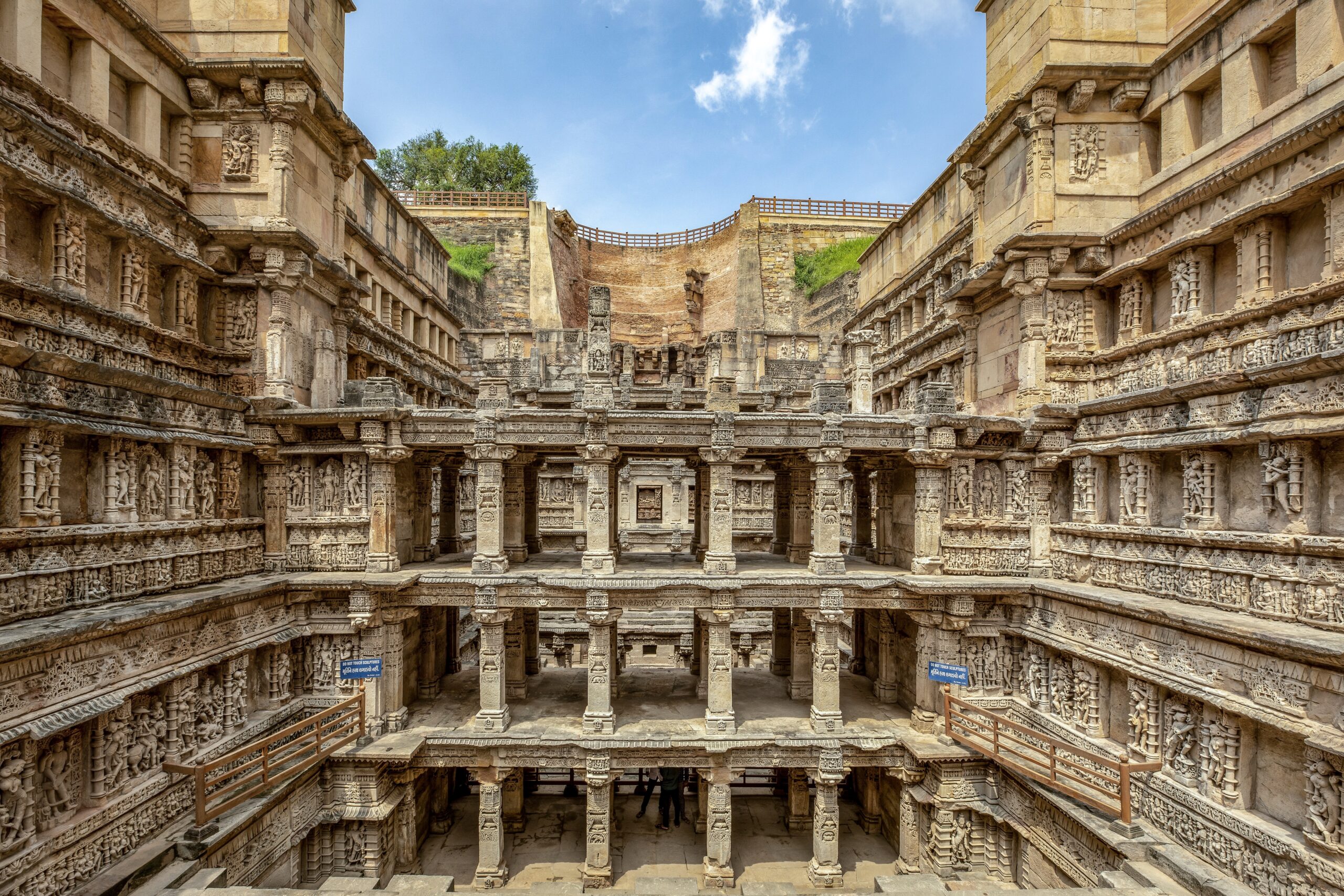Rani Ki Vav: Step into the heart of Gujarat, and you’ll discover Rani Ki Vav, an ancient stepwell that stands as a testament to the artistic brilliance and engineering prowess of the craftsmen of its time. Situated in the town of Patan, Rani Ki Vav, or the Queen’s Stepwell, is a UNESCO World Heritage Site that not only served as a utilitarian marvel for water conservation but also as a canvas for intricate carvings that narrate tales of mythology and royalty.
“Step back in time at Rani Ki Vav, an ancient stepwell in Patan, Gujarat, recognized as a UNESCO World Heritage site. Marvel at the intricate architecture and elaborate carvings that adorn the seven levels, showcasing the craftsmanship of the Solanki dynasty. Explore the subterranean marvels, including the stunning sculptures, columns, and pillared pavilions, making Rani Ki Vav a testament to India’s rich cultural heritage and engineering excellence.”
Historical Origins: Rani Ki Vav
Rani Ki Vav was commissioned by Queen Udayamati in the 11th century in memory of her husband, King Bhimdev I of the Solanki dynasty. The stepwell was not merely a functional structure for water storage; it was conceived as a grandiose piece of art, reflecting the aesthetic sensibilities of the time.
Architectural Splendor: Rani Ki Vav
The stepwell is a masterpiece of Maru-Gurjara architecture, characterized by its intricate carvings, geometric precision, and grand proportions. Descending into the stepwell, visitors are greeted by a series of pillared pavilions, galleries, and ornate chambers, each adorned with exquisite sculptures and reliefs.
Symbolism in Design: Rani Ki Vav
Rani Ki Vav is not just an architectural marvel; it is a symbolic representation of the sanctity of water. The stepwell’s design is an allegory for the cosmic ocean, with its numerous levels symbolizing the layers of the universe. The meticulously carved walls depict a pantheon of Hindu deities, celestial beings, and mythological narratives.
Seven Levels of Beauty:
The stepwell consists of seven levels, each representing a different theme and showcasing the artistic prowess of the craftsmen. The intricate carvings include mythological scenes, celestial beings, and divine deities such as Vishnu, Shiva, and various forms of the goddess. The attention to detail and symmetry is awe-inspiring, inviting visitors to marvel at the craftsmanship of the artisans.
Nandi Mandapa:
At the lowest level of Rani Ki Vav, one encounters a grand Nandi Mandapa, dedicated to Lord Shiva’s divine mount, Nandi. The colossal Nandi sculpture is flanked by exquisitely carved pillars and walls, creating a mesmerizing tableau that adds to the overall spiritual ambiance of the stepwell.
Conservation and Recognition:
Rani Ki Vav, after centuries of neglect, was rediscovered in the 1940s and has since undergone extensive restoration efforts. In 2014, it was inscribed as a UNESCO World Heritage Site, recognizing its cultural and historical significance. Conservation initiatives continue to ensure the preservation of this architectural gem for future generations.
Visitor Experience:
Today, Rani Ki Vav is not only a site of historical importance but also a popular tourist destination. Visitors can traverse the stepped corridors, admiring the intricate sculptures and reliefs that adorn the walls. The play of light and shadow on the carvings, especially during different times of the day, adds to the enchanting experience.

Conclusion:
Rani Ki Vav stands as a living testament to the ingenuity of ancient Indian artisans, showcasing the intersection of art, architecture, and spirituality. As visitors descend the steps, they embark on a journey through time, witnessing the splendor of a bygone era. Rani Ki Vav, with its divine carvings and grand design, remains a jewel in the architectural crown of Gujarat, inviting all to immerse themselves in the sublime beauty of this historical stepwell.

